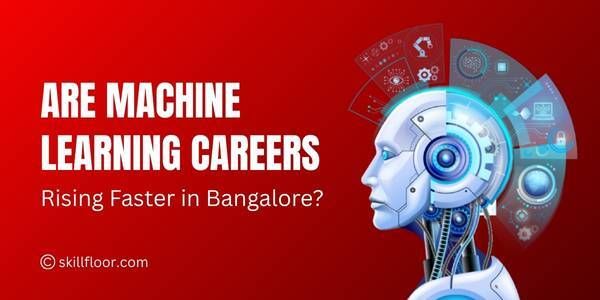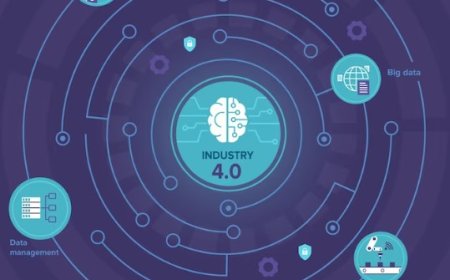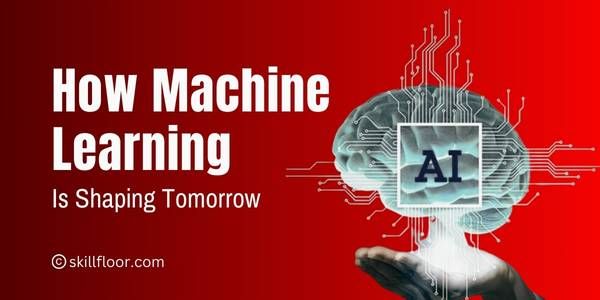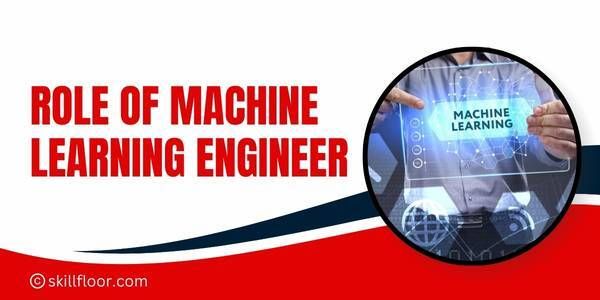Importance of Machine Learning Applications & Benefits
how machine learning impacts daily tasks, improves decision-making, and supports industries like healthcare, banking, and agriculture. Learn types, benefits, challenges, and future scope.

Have you noticed that everyday tasks are becoming more intelligent and better? Machine learning-powered useful functions operate in the background, from safe banking to movie recommendations. These systems are created by experts to identify trends, save time, and simplify life silently assisting us in making better decisions every day.
Well-known companies like Netflix, Amazon, and top banks utilize machine learning to enhance their customer service. These tools speed up and improve the usefulness of services. These businesses' success is frequently reported in reliable business news, showing to others the benefits of implementing straightforward, machine learning-based systems.
People depend on technological advances daily to assist them with basic tasks like checking bank alerts or watching television. User feedback improves these tools. People feel safer and develop strong trust over time when businesses provide straightforward explanations of how things operate.
What is Machine Learning?
Computers may use machine learning to learn from data and make intelligent decisions without the need for detailed guidelines. As more cases are seen, it aids in system improvement. As a result, they can categorize images, recommend tunes, and even provide doctors with prompt, practical assistance.
Machine learning has improved the functionality of many of the products we use on a daily basis, such as internet searches, shopping applications, and maps. It looks for patterns in vast volumes of data and applies them to produce helpful results. The impacts of machine learning continue to grow as the technology learns and improves over time, simplifying and expediting our daily tasks.
Understanding the Importance of Machine Learning
-
Saves Time: Usual duties like arranging images or sorting emails may be handled by smart solutions. People may do tasks more quickly and easily as a result, freeing them more time to concentrate on the things that are really important.
-
Offers Better Choices: Systems pick up on your preferences whether you're buying online or viewing films. They make your experience easier to enjoy, more enjoyable, and more personalized by suggesting better options based on your previous selections.
-
Finds Problems Early: Smart systems can identify issues early in industries like banking and healthcare. This keeps things safe and efficient by enabling workers to address problems fast, sometimes before they even realize something is wrong.

-
Makes Services Smarter: Since many websites and applications learn over time, they continue to improve. Every time, they make sure you have a quicker and more beneficial experience by observing what works and improving their service.
-
Supports Many Fields: Experts use machine learning techniques to make better judgments in transportation, agriculture, and health. By analyzing data patterns, these technologies enable individuals to operate more efficiently and discover novel solutions to issues with ease.
-
Learns and Improves: The more advanced technologies are used, the more beneficial they become. They improve gradually, learn from fresh data, and assist individuals in natural, easy-to-implement ways.
Key Advantages of Machine Learning
-
Quick and Easy Work: Machine learning speeds up processes like file sorting and response generation. This translates to more time for meaningful or enjoyable activities and less time spent on tedious tasks.
-
Better Ideas from Data: It searches for trends in historical data. This eliminates the need to spend hours looking for solutions and helps people and organizations make wise decisions, such as better planning or understanding what customers truly desire.
-
Learns and Gets Better: It becomes better the more it is utilized. As machine learning continues to learn, it is able to provide more accurate findings and become even more useful in your day-to-day activities.
-
Fits Your Needs: Over time, it learns what you need or prefer. Whether it's food, clothing, or music, it makes recommendations based on your preferences, making everything feel more tailored and practical.
-
Spots Problems Fast: Early problems, such as an odd payment or health alert, can be detected using machine learning. This provides basic peace of mind and safety by addressing issues before they become serious.
-
Used in Many Areas: It benefits everyone, from hospitals to stores to schools. People utilize it to improve their instruction, make more intelligent sales, or provide speedier service, which benefits everyone and makes things easier for employees.
Real-World Applications of Machine Learning
-
Healthcare Help: Machine learning is used by doctors to review medical data, identify illnesses early, and recommend more effective therapies. By providing quicker and more precise assistance when people need it most, it helps save lives.
-
Safer Banking: Machine learning is used by doctors to review medical data, identify illnesses early, and recommend more effective therapies. By providing quicker and more precise assistance when people need it most, it helps save lives.
-
Smarter Shopping: Products are recommended by online retailers based on your past purchases or viewings. Shopping becomes easier and more enjoyable as a result of finding ideas that fit your demands and style without having to do a lot of exploring.
-
Better Travel Plans: Machine learning is used by map and transportation applications to identify the quickest routes, steer clear of traffic, and recommend the best times to go. It makes traveling less stressful and helps individuals save time.
-
Fun with Entertainment: Music services or streaming applications such as Netflix Find out what you enjoy. It's easy to discover new favorites without wasting too much time searching because they suggest shows or music you might like.
-
Support in Farming: It is used by farmers to assess crop health, weather, and soil. It facilitates work and helps them produce more food with less waste by assisting them in determining when to plant, water, or harvest.
The Different Types of Machine Learning
1. Supervised Learning
Learning with an instructor is similar to supervised learning. The system provides precise answers and clear examples. Similar to using flashcards, it looks at each question and answer until it recognizes the pattern and knows the correct response.
Eventually, this kind of learning enables the system to make accurate guesses on its own. For example, it may be used to determine whether a picture contains a dog or a cat or to determine whether an email is spam. The more examples it sees, the better.
Unsupervised learning operates in the absence of answers. Giving someone a bunch of puzzle pieces without the finished image is analogous to that. The system searches for patterns or similar objects and groups them, even if no one has specified what the groupings should be.
Sorting or arranging things when we don't know much at first is made easier with this kind of learning. For instance, it doesn't require instructions to filter photographs by color and form or group clients according to their purchasing patterns.
3. Reinforcement Learning
The main goal of reinforcement learning is to learn by doing. The system receives a reward if it is successful in trying anything. It takes the lesson learned and tries something different the following time if it doesn't work. Learning to ride a bike is similar to this.
Tasks involving stages or rules, such as driving or playing games, are excellent candidates for this approach. As a result of rewarding every successful move, the algorithm continues to select better actions. It gradually improves at achieving its objective with little assistance.
Both supervised and unsupervised learning approaches are used in semi-supervised learning. The system is guided by the initial set of accurate responses. It then utilizes what it has learned to deduce the remaining information independently.
When there isn't enough labeled data but there is still a lot to learn, this kind is helpful. If only a subset of the photographs is identified as cats or dogs, for instance, the algorithm can use what it has learned from the labeled photos to predict the remaining ones.
How Machine Learning Works
-
Data Collection: First, we collect information from many sources, such as records, sensors, and websites. The system will utilize this data to identify trends and eventually make informed judgments.
-
Data Preprocessing: The data is cleaned and arranged prior to learning. To make it easier for the system to read, errors are fixed, blank spaces are filled in, and the format is simplified.
-
Model Training: The system now examines the information. It learns patterns or rules by examining several samples. It's similar to working with an instructor to practice until it grasps the standard procedure.
-
Testing and Evaluation: The system is tested with fresh data after learning to see how well it learns. This phase indicates if it provides accurate responses or whether more training is still required.
-
Real-World Deployment: The technology is put to use in real life when it produces positive results. It may assist with travel planning, shopping recommendations, or even aiding physicians with their regular chores, such as preparing health reports or supporting risk management decisions in critical areas.
-
Continuous Improvement: The system continues learning even after it has been utilized. As things around it change, it continues to function properly because new data keeps it informed and intelligent over time.
The Role of Data in Machine Learning
The foundation of machine learning is data. Systems learn from the knowledge they are given, much as individuals do from examples. The system's ability to see patterns and make informed decisions improves with the clarity and utility of the data. Good data gives the system a better understanding of what to search for and how to react in various scenarios.
Cleaning and preparing the data is necessary before learning can start. Data preprocessing is a step that helps eliminate errors or missing information. A clean, well-structured data set allows the algorithm to learn more quickly and precisely. Without this crucial phase, even the finest learning resources might produce subpar or unclear outcomes.
Challenges and Limitations of Machine Learning
-
Needs Good Data: Data that is clear and neat is ideal for machine learning. Inaccurate, missing, or disorganized data might cause the system to learn incorrect information and provide subpar outcomes or incorrect responses.
-
Takes Time to Train: It does not immediately learn everything. In particular, training with large amounts of data takes time. This implies that it may take some time for the system to begin producing useful and positive outcomes.
-
Can Make Mistakes: Even intelligent systems make mistakes from time to time. They may make a mistaken recommendation or overlook a crucial aspect, particularly if they have never encountered that kind of example before.
-
Hard to Understand Decisions: Sometimes it's difficult to understand the reasoning behind a system's decision. This might cause uncertainty or anxiety, particularly in fields that need precise responses, like health or finances.
-
Needs Regular Updates: Both the statistics and the world are subject to change. Over time, the system may become antiquated and less helpful for daily chores if fresh data isn't added often.
-
Can Be Costly: Strong computers and knowledgeable personnel could be required to set up a learning system. Particularly for smaller teams or those that are just getting started with new technologies, this may be very expensive.
The Future of Machine Learning
Machine learning is expanding quickly and permeating many facets of daily life. Even more intelligent instruments will be used in homes, farms, hospitals, and schools in the future. These technologies will handle more complex issues, provide faster responses, and have a deeper understanding of humans. As they gain more knowledge, they will be able to assist with everyday chores with less human involvement.
Machine learning will become more accessible to those who are not IT specialists. Real-time learning will occur, and tools will become more user-friendly. Better outcomes and quicker updates follow. But using machine learning responsibly is also crucial, ensuring that technology is safe, equitable, and beneficial for everybody. The future appears bright and full of fresh ideas with careful consideration and wise decisions.
Machine learning is subtly altering the way we work, live, and handle challenges in our daily lives. It is becoming a useful element of everyday life, from assisting farmers and physicians to simplifying travel and shopping. Learning tools will continue to advance and encourage wise choices as more individuals become aware of and utilize them. It's crucial to use these tools carefully, ensuring that they are equitable, understandable, and beneficial to everybody. The future is full of fascinating possibilities when people and technology work together in the proper balance. For individuals all throughout the world, what formerly appeared complicated is now making life easier, quicker, and more beneficial.




























































